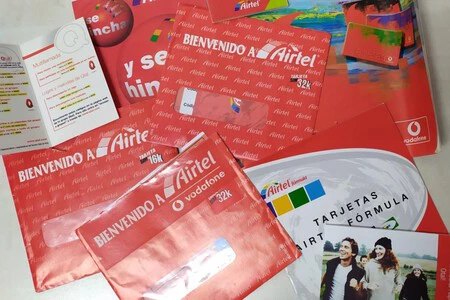At that time, there were already two mobile phone brands, but both belonged to Telefónica: Moviline, with 1G coverage, and MoviStar, with 2G coverage. Airtel was born directly how 2G operator, and brought with it a new telephone prefix. If the 909 belonged to MoviStar, the 907 would be from Airtel. In November 1998, the initial 9 would be replaced by a 6, as most mobile numbers are currently designated.
World record of 9 months for the start-up of the service

In 1994, the Airtel consortium (acronym for International Alliance of Telephony Networks) was founded, made up of Airtouch, BT, Union Fenosa and important banks among which were Central Hispano, Santander, BBK, and Caixa Catalunya among others.
That same year, the Government approved the Royal Decree that deregulated the telecommunications sector and made it possible to liberalize and grow the mobile phone business. Y Airtel was the one who won the second mobile phone license Spanish.
On June 15, 1995, after only six months of work to deploy the network and create the systems, the first call from an Airtel phoneand on October 3 the company launched the first commercial services with coverage in 50% of the population, specifically in 17 cities, including Alicante, Barcelona, Bilbao, Burgos, Castellón, Córdoba, Gerona, Guadalajara, Lérida, Málaga, Madrid, San Sebastián, Seville, Tarragona, Valencia , Vitoria and Saragossa.


Eduardo Serra, president of Airtel, and Ignacio Galán, its CEO, stated during the start-up of the service that, given the rush of time to make the project a reality, the priority was not to experiment or innovate, but to adapt what was already had done in Germany and Portugal, to be more aggressive in network coverage and qualityincluded in roaming.
The monopoly is over, but the price war was slow in coming
The commercial birth of Airtel came with a single contract fee and some controversy, since it was practically identical to the one that MoviStar had released a month before, although Vodafone claimed that it had been Telefónica who copied them shortly before launch. But beyond who was the first, when the moment of truth arrived, Airtel gave up a price war to break the market.
At that time, the usual rate was to have three different prices depending on the time (in addition to call establishment), one monthly installment of 4,000 pesetas (about 46 euros if we take inflation into account) and a registration fee of 3,500 pesetas (another 40 euros). In addition, the first full minute and the rest of the call in 30-second increments were charged. The prices were as follows:

- Call setup: 20 pesetas (about 23 cents).
- Calls during normal hours (Monday to Friday between 7:00 a.m. and 2:00 p.m. and 4:00 p.m. and 9:00 p.m.): 40 pesetas per minute (about 46 cents). It was a peseta more expensive than MoviStar.
- Calls during reduced hours (Monday to Friday between 2:00 p.m. and 4:00 p.m. and 9:00 p.m. and 12:00 a.m.): 30 pesetas per minute (about 35 cents). Same price as MoviStar.
- Calls during super-reduced hours (Monday to Friday between 0 and 7 am + 2 hours on Saturday and Sunday): 17 pesetas per minute (about 20 cents). It was a peseta cheaper than MoviStar.
From the beginning, Airtel and MoviStar opted to subsidize phones that were blocked for users of the same company, which allowed lowering the average price of GSM mobiles, from about 80,000 pesetas, to 40,000 or 50,000 pesetas. Motorola, Nokia. Siemens, Ericsson, Alcatel were the phone brands that stood out the most in those years.
After three months of existence, Airtel closed 1995 adding its first 15,000 clients.
Airtel had six years when it “disappeared”


For six years, until Airtel passed into the hands of Vodafone, it managed to close 1996 with 600,000 customers, in 1997 it reached the first million, in 1999 it had five million users, and the year 2000 closed with 7 million customers.
Over time, Airtel became more aggressive in terms of prices, launching famous services such as Qtal, which allowed to create a group of up to ten users, with whom to communicate by short dialing to access calls and messages for 10 pesetas. It was also possible to send a message to the whole group for 30 pesetas.


Among the most outstanding milestones, Airtel launched its first card service prepaid in 1996in 1997 it already offered coverage for 96% of the population and Edu congratulated us on Christmas, in 1998 he made a profit after its third year of activity and reached a 30.6% market sharein 1999 it obtained a license to offer fixed telephonyand in the year 2000 it was made with the license of UMTS to deploy 3G.
The beginning of the end of the Airtel brand began in 1999, when Vodafone acquired Airtouch, taking a 21% stake in Airtel. In the year 2000, Vodafone took control of the operator with 74% of the shares, and in 2021, it extended its stake to 91.6% and the Airtel brand passed into a better lifeuntil it was clumsily revived in the year 2020.
More information | Vodafone | Coit.
The post What happened to Airtel, the mobile operator that broke Telefónica’s monopoly first appeared on Gearrice.
